- Home
- Clive Cussler
The Spy
The Spy Read online
The Spy
Clive Cussler
Justin Scott
It is 1908, and international tensions are mounting as the world plunges towards war. When a brilliant American battleship gun designer dies in an apparent suicide, the man's grief-stricken daughter turns to the legendary Van Dorn Detective Agency to clear her father's name. Van Dorn puts his chief investigator on the case, and Isaac Bell soon realizes that the clues point not to suicide, but to murder. When more suspicious deaths follow, it becomes clear that someone – an elusive spy – is orchestrating the destruction of America 's brightest technological minds…and the murders all connect to a top-secret project called Hull 44. As the intrigue deepens, Bell finds himself pitted against German, Japanese, and British spies, in a mission that encompasses dreadnaught battleships, Teddy Roosevelt's Great White Fleet, Chinatown, Hell's Kitchen, and the Brooklyn Navy Yard. Isaac Bell has certainly faced perilous situations before, but this time it is more than the future of his country that's at stake – it's the fate of the world.
Clive Cussler, Justin Scott
The Spy
The third book in the Isaac Bell series, 2010
For Amber
THE GUNNER’S DAUGHTER
*
1
MARCH 17, 1908
WASHINGTON, D.C.
THE WASHINGTON NAVY YARD SLEPT LIKE AN ANCIENT city guarded by thick walls and a river. Old men stood watch, plodding between electric time detectors to register their rounds of factories, magazines, shops, and barracks. Outside the perimeter rose a hill of darkened workers’ houses. The Capitol Dome and the Washington Monument crowned it, glittering under a full moon like polar ice. A whistle moaned. A train approached, bleeding steam and clanging its bell.
U.S. Marine sentries opened the North Railroad Gate.
No one saw Yamamoto Kenta hiding under the Baltimore and Ohio flatcar that the locomotive pushed into the yard. The flatcar’s wheels groaned under a load of fourteen-inch armor plate from Bethlehem, Pennsylvania. Brakemen uncoupled the car on a siding, and the engine backed away.
Yamamoto eased to the wooden crossties and stone ballast between the rails. He lay still until he was sure he was alone. Then he followed the tracks into the cluster of three-story brick-and-iron buildings that housed the Gun Factory.
Moonlight lancing down from high windows, and the ruby glow of banked furnaces illuminated an enormous cavern. Traveler cranes hulked in shadows overhead. Colossal fifty-ton dreadnought battleship guns crowded the floor as if a fiery hurricane had leveled a steel forest.
Yamamoto, a middle-aged Japanese with threads of gray in his shiny black hair and a confident, dignified manner, wove a purposeful route through the watchmen’s prescribed paths, examining gun lathes, machines for rifling, and furnaces. He paid special attention to deep wells in the floor, the brick-lined shrinking pits where the guns were assembled by squeezing steel jackets around fifty-foot tubes. His eye was sharp, refined by similar clandestine “tours” of Vickers and Krupp-the British and German naval gun factories-and the Czar of Russia’s ordnance plants at St. Petersburg.
An old-style Yale lock secured the door to the laboratory storeroom that dispensed supplies to the engineers and scientists. Yamamoto picked it open quickly. Inside, he searched cabinets for iodine. He poured six ounces of the shiny blue-black crystals into an envelope. Then he scrawled “crystal iodine, 6 ounces” on a requisition sheet with the initials “ AL ” for the Gun Factory’s legendary chief designer, Arthur Langner.
In a distant wing of the sprawling building, he located the test caisson where armor experts simulated torpedo attacks to measure the awesomely magnified impact of explosions underwater. He rummaged through their magazine. The sea powers locked in the international race to build modern dreadnought battleships were feverishly experimenting with arming torpedoes with TNT, but Yamamoto noted that the Americans were still testing formulations based on guncotton propellants. He stole a silk bag of Cordite MD smokeless powder.
As he opened a janitor’s closet to filch a bottle of ammonia water, he heard a watchman coming. He hid in the closet until the old fellow had shuffled past and disappeared among the guns.
Swift and silent, Yamamoto climbed the stairs.
Arthur Langner’s drawing loft, which was not locked, was the workshop of an eccentric whose genius spanned war and art. Blueprints for stepped-thread breeches and visionary sketches of shells with smashing effects as yet unheard of shared the workspace with a painter’s easel, a library of novels, a bass violin, and a grand piano.
Yamamoto left the Cordite, the iodine, and the ammonia on the piano and spent an hour studying the drafting tables. “Be Japan ’s eyes,” he preached at the Black Ocean Society’s spy school on the rare occasions that duty allowed him home. “Take every opportunity to observe, whether your ultimate mission is deception, sabotage, or murder.”
What he saw frightened him. The 12-inch guns on the factory floor could throw shells seven miles to pierce ten inches of the newest face-hardened side armor. But up here in the drawing loft where new ideas were hatched, the Americans had preliminary sketches for 15-inch guns and even a 16-inch, seventy-foot-long monster that would hurl a ton of high explosives beyond the curve of the Earth. No one knew yet how to aim such a weapon when the distances were too great to gauge range by “spotting” the splashes of near misses. But the bold imagination that Yamamoto saw at work warned him it was only a matter of time before America ’s “New Navy” invented novel concepts for fire control.
Yamamoto stuffed a wad of paper money in the gun designer’s desk-fifty twenty-dollar U.S. gold certificates-considerably more than what one of the arsenal’s skilled workmen earned in a year.
Already the U.S. Navy was third only to England ’s and Germany ’s. Its North Atlantic Fleet-brazenly rechristened the “Great White Fleet”-was showing the flag in a swaggering voyage around the world. But Britain, Germany, Russia, and France were not America ’s enemies. The true mission of the Great White Fleet was to threaten the Empire of Japan with naked steel. America aimed to command the Pacific Ocean from San Francisco to Tokyo.
Japan would not allow it, Yamamoto thought with a prideful smile.
It was only three years since the Russo-Japanese War spawned in blood a new master of the Western Pacific. Mighty Russia had tried to strong-arm Japan. Today the Empire of Japan occupied Port Arthur. And Russia ’s Baltic Fleet lay under three hundred feet of water at the bottom of the Tsushima Strait -thanks in no small part to Japanese spies who had infiltrated the Russian Navy.
As Yamamoto closed the drawer on the money, he had the eerie sensation of being watched. He looked across the desk into the bold gaze of a beautiful woman whose photographic portrait stood in a silver frame. He recognized Langner’s dark-haired daughter and admired how faithfully the photographer had captured her compelling eyes. She had inscribed it in a flowing hand “For Father, the ‘gunner’ who ‘dreads nought’!”
Yamamoto turned his attention to Langner’s bookshelves. Bound volumes of patent applications vied with novels for the space. The applications filed recently had been written on a typewriter. Yamamoto pulled volume after volume, working his way back to the last year that applications were submitted in longhand. He spread one on the designer’s desk, then chose a sheet of paper from a side drawer and a Waterman fountain pen with a gold nib. Referring repeatedly to the sample of handwriting, he forged a brief, incoherent letter. Ending it with the words “Forgive me,” he scrawled Arthur Langner’s signature.
He took the iodine and the ammonia into the gun designer’s washroom. With the butt of his Nambu pocket pistol he crushed the iodine crystals on the marble washstand and brushed the resultant powder into a shaving mug. He wiped the gun
clean with the washroom towel, leaving a purplish smear on the cloth. Then he poured ammonia onto the iodine powder, stirring with Langner’s toothbrush until he had a thick paste of nitrogen iodide.
He propped open the lid of the grand piano, reached into the narrow end farthest from the keyboard, and smeared the paste on the closely bunched strings. After it dried, the explosive concoction would become unstable and extremely sensitive to impact. A gentle vibration would set off a loud bang and a flash. Alone, the explosion would damage little beyond the piano. But as a detonator, it would be deadly.
He placed the silk sack on top of the cast-iron frame, immediately above the strings. The sack contained enough Cordite MD smokeless powder to propel a twelve-pound shell two miles.
YAMAMOTO KENTA LEFT the Gun Factory the way he had entered, his eyes still stinging from the ammonia. Suddenly, things went wrong. The North Railroad Gate was blocked by an unexpected burst of late-night activity. Switch engines were huffing gondola cars in and out, attended by a horde of brakemen. He retreated deeper into the arsenal, past the powerhouse, through a maze of roads, buildings, and storage yards. Orienting himself by the powerhouse smokestacks and a pair of experimental radio-antenna towers silhouetted against the moonlit sky, he crossed a park and gardens bordered by handsome brick houses in which slept the families of the commandant and officers of the yard.
The ground rose higher here. To the northwest he glimpsed the Capitol looming over the city. He saw it as yet another symbol of America ’s fearsome might. What other nation could have erected the largest cast-iron dome in the world at the same time they were fighting a bloody Civil War? He was almost to a side gate when a sentry surprised him on a narrow path.
Yamamoto had just enough time to back into a hedgerow.
His capture would disgrace Japan. He was ostensibly in Washington, D.C., to help catalog the recent contribution of the Freer Collection of Asian art to the Smithsonian Institution. The front allowed him to mingle with the Diplomatic Corps and powerful politicians, thanks to their wives who fancied themselves artists and hung on his every word about Japanese art. Genuine experts at the Smithsonian had caught him off base twice already. He had blamed gaps in his hastily learned knowledge on a poor command of English. So far, the experts accepted the excuse. But there would be absolutely no plausible explanation for a Japanese curator of Asian art caught prowling the Washington Navy Yard at night.
The watchman came up the path, boots crunching on gravel. Yamamoto backed in deeper, drawing his pistol as a last resort. A gunshot would rouse Marine guards from their barracks at the main gate. Deeper he pushed, feeling for an opening in the branches that would lead out the other side.
The watchman had no reason to look into the hedgerow as he plodded by. But Yamamoto was still pushing backward against the springy branches, and one snapped. The watchman stopped. He peered in the direction of the sound. In that instant the moon bathed both their faces.
The Japanese spy saw him clearly-a retired sailor, an “old salt,” supplementing his meager pension with a night watchman’s job. His face was leathery, his eyes bleached by years of tropical sunlight, his back stooped. He straightened up at the sight of the slender figure hiding in the hedge. Suddenly galvanized, the pensioner was no longer an old man who should have called for help but was hurled back to his time as a long-limbed, broad-shouldered “blue jacket” in the full tide of life. A strong voice that once carried to the mast tops demanded, “What the devil are you doing in there?”
Yamamoto wormed out the back of the hedge and ran. The watchman pushed into the hedge and got tangled in it and roared like a bull. Yamamoto heard answering shouts in the distance. He changed course and raced along a high wall. It had been raised, he had learned while preparing for his “tour,” after looters invaded when the Potomac River flooded the yard. It was too high to scale.
Boots pounded on gravel. Old men shouted. Electric flashlights flickered. Suddenly he saw salvation, a tree standing near the wall. Digging his india-rubber crepe soles into the bark, he shinnied up the trunk to the lowest branch, climbed two higher, and jumped onto the wall. He heard shouts behind him. The city street below was empty. He jumped down and cushioned a hard landing with flexed knees.
AT BUZZARD POINT, near the foot of 1st Street, Yamamoto boarded an eighteen-foot motorboat powered by a two-horse Pierce “Noiseless.” The pilot steered into the current and down the Potomac River. A shroud of surface mist finally closed around the boat, and Yamamoto exhaled a sigh of relief.
Huddling from the cold in the cubby under the bow, he reflected upon his close call and concluded that his mission had suffered no damage. The garden path where the night watchman had almost caught him was at least a half mile from the Gun Factory. Nor did it matter that the old man had seen his face. Americans were contemptuous of Asians. Few could distinguish between Japanese and Chinese features. Since immigrants from China were far more numerous than those from Japan, the watchman would report an intrusion by a despised Chinese-an opium fiend, he thought with a relieved smile. Or, he chuckled silently, a nefarious white slaver lurking to prey on the commandant’s daughters.
Five miles downriver, he disembarked in Alexandria, Virginia.
He waited for the boat to depart the wooden pier. Then he hurried along the waterfront and entered a dark warehouse that was crammed with obsolete naval gear deep in dust and spiderwebs.
A younger man whom Yamamoto had labeled, scornfully, “The Spy” was waiting for him in a dimly lit back room that served as an office. He was twenty years Yamamoto’s junior and ordinary-looking to the point of being nondescript. His office, too, held the outdated paraphernalia of earlier wars: crossed cutlasses on the walls; a Civil War-era Dahlgren cast-iron, muzzle-loading cannon, which was causing the floor to sag; and an old 24-inch-diameter carbon arc battleship searchlight propped behind his desk. Yamamoto saw his own face mirrored in its dusty eye.
He reported that he had accomplished his mission. Then, while the spy took notes, he related in precise detail everything that he had seen at the Gun Factory. “Much of it,” he said in conclusion, “looks worn out.”
“Hardly a surprise.”
Overworked and underfunded, the Gun Factory had produced everything from ammunition hoists to torpedo tubes to send the Great White Fleet to sea. After the warships sailed, it forwarded train-loads of replacement parts, sights, firing locks, breech plugs, and gun mounts to San Francisco. In another month the fleet would recuperate there from its fourteen-thousand-mile voyage around South America’s Cape Horn and refit at the Mare Island Naval Shipyard to cross the Pacific.
“I would not underestimate them,” Yamamoto retorted gloomily. “Worn-out machines are replaceable.”
“If they have the nerve.”
“From what I saw, they have the nerve. And the imagination. They are merely catching their breath.”
The man behind the desk felt that Yamamoto Kenta was possessed-if not unhinged-by his fear of the American Navy. He had heard this rant before and knew how to change the subject by derailing the Jap with lavish praise.
“I have never doubted your acute powers of observation. But I am awed by the range and breadth of your skills: chemistry, engineering, forgery. In one fell swoop you have impeded the development of American gunnery and sent their Congress a message that the Navy is corrupt.”
He watched Yamamoto preen. Even the most capable operative had his Achilles’ heel. Yamamoto’s was a self-blinding vanity.
“I’ve played this game a long time,” Yamamoto agreed with false modesty.
In fact, thought the man behind the desk, the chemistry for the nitrogen iodide detonator was a simple formula found in The Young Folks Cyclopaedia of Games and Sports. Which was not to take away from Yamamoto’s other skills, nor his broad and deep knowledge of naval warfare.
Having softened him up, he prepared to put the Jap to the test. “Last week aboard the Lusitania,” he said, “I bumped into a British attaché. You know the
sort. Thinks of himself as a ‘gentleman spy.’”
He had an astonishing gift for accents, and he mimicked, faultlessly, an English aristocratic drawl. “‘The Japanese,’ this Englishman proclaimed to all in the smoking room, ‘display a natural aptitude for espionage, and a cunning and self-control not found in the West.’”
Yamamoto laughed. “That sounds like Commander Abbington-Westlake of the Admiralty’s Naval Intelligence Department, Foreign Division, who was spotted last summer painting a watercolor of the Long Island Sound that just happened to contain America’s latest Viper Class submarine. Do you suppose the windbag meant it as a compliment?”
“The French Navy he penetrated so successfully last month would hardly call Abbington-Westlake a windbag. Did you keep the money?”
“I beg your pardon?”
“The money you were supposed to put in Arthur Langner’s desk. Did you keep it for yourself?”
The Jap stiffened. “Of course not. I put it in his desk.”
“The Navy’s enemies in Congress must believe that their star designer, their so-called Gunner, was guilty of taking a bribe. That money was vital to our message to the Congress to make them wonder what else is rotten in the Navy. Did you keep the money?”
“I should not be surprised that you would ask such a degrading question of a loyal associate. With the heart of a thief you assume that everyone is a thief.”
“Did you keep the money?” the spy repeated. A physical habit of maintaining utter stillness masked the steely power of his compact frame.
“For the last time, I did not keep the money. Would you feel more secure if I swore on the memory of my old friend-your father?”

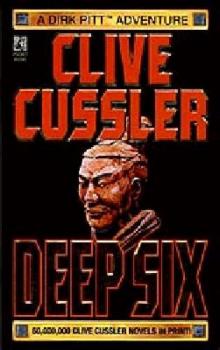 Deep Six
Deep Six Odessa Sea
Odessa Sea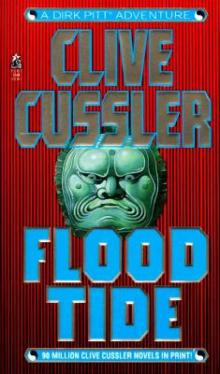 Flood Tide
Flood Tide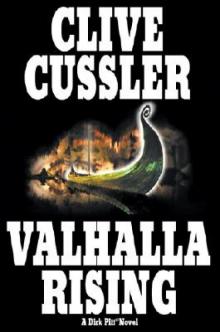 Valhalla Rising
Valhalla Rising Thriller 2
Thriller 2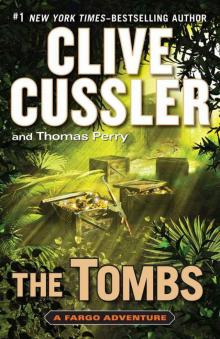 The Tombs
The Tombs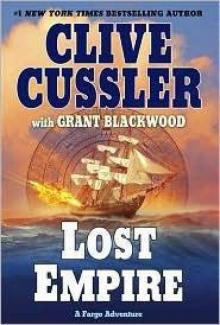 Lost Empire
Lost Empire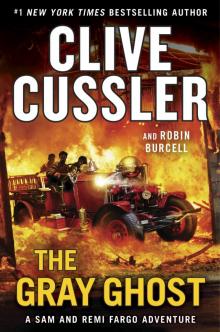 The Gray Ghost
The Gray Ghost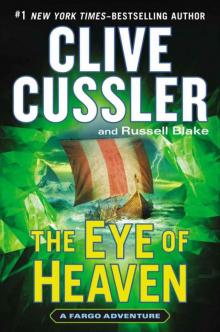 The Eye of Heaven
The Eye of Heaven Polar Shift
Polar Shift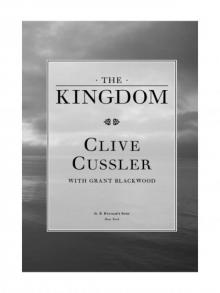 The Kingdom
The Kingdom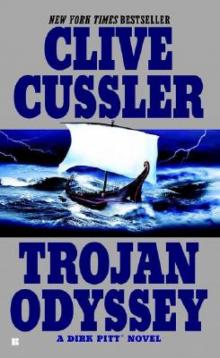 Trojan Odyssey
Trojan Odyssey Shadow Tyrants
Shadow Tyrants Nighthawk
Nighthawk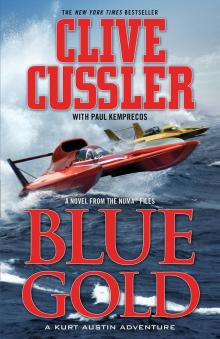 Blue Gold
Blue Gold Serpent
Serpent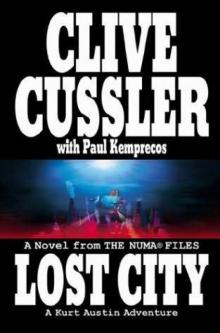 Lost City
Lost City The Gangster
The Gangster White Death
White Death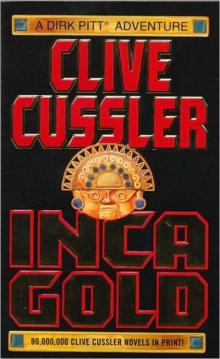 Inca Gold
Inca Gold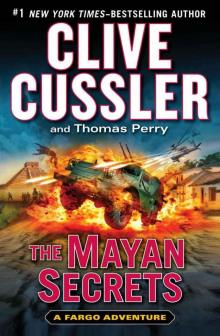 The Mayan Secrets
The Mayan Secrets The Pharaoh's Secret
The Pharaoh's Secret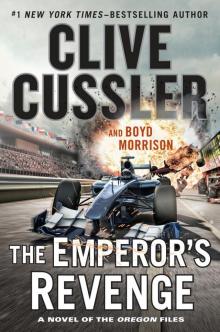 The Emperor's Revenge
The Emperor's Revenge Corsair
Corsair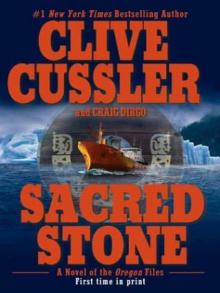 Sacred Stone
Sacred Stone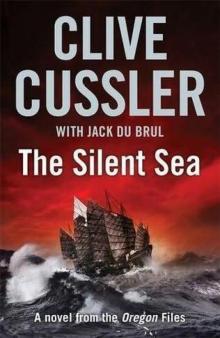 The Silent Sea
The Silent Sea The Rising Sea
The Rising Sea Black Wind
Black Wind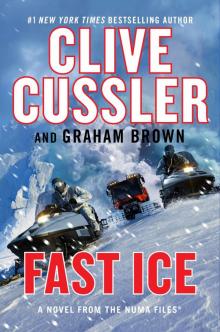 Fast Ice
Fast Ice Ghost Ship
Ghost Ship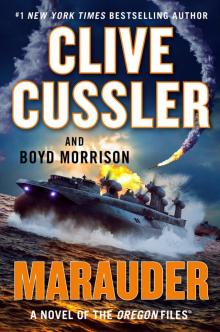 Marauder
Marauder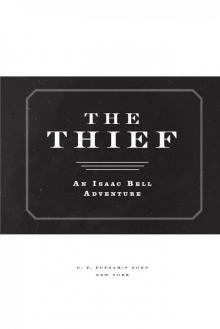 The Thief
The Thief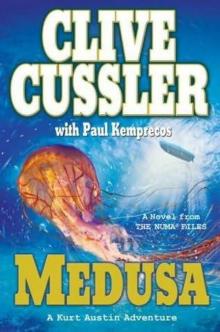 Medusa
Medusa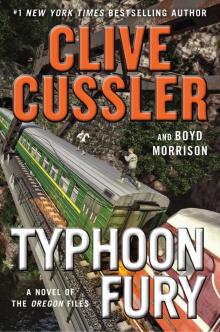 Typhoon Fury
Typhoon Fury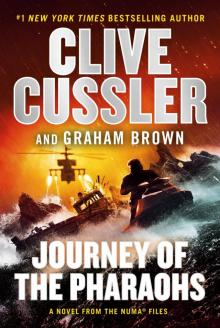 Journey of the Pharaohs
Journey of the Pharaohs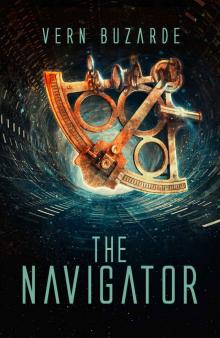 The Navigator
The Navigator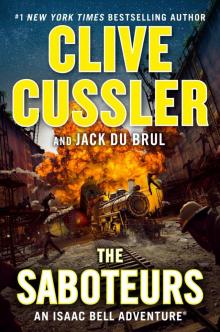 The Saboteurs
The Saboteurs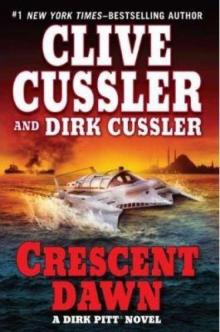 Crescent Dawn
Crescent Dawn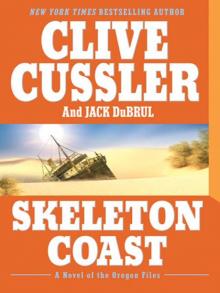 Skeleton Coast
Skeleton Coast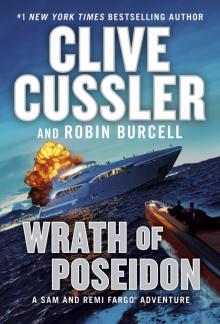 Wrath of Poseidon
Wrath of Poseidon The Mediterranean Caper
The Mediterranean Caper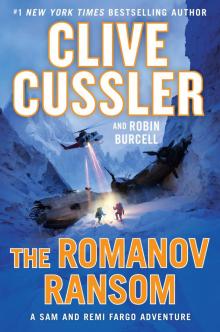 The Romanov Ransom
The Romanov Ransom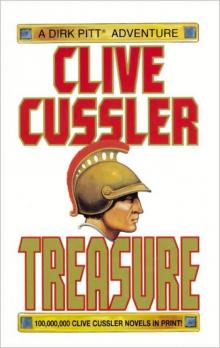 Treasure
Treasure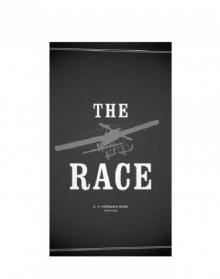 The Race
The Race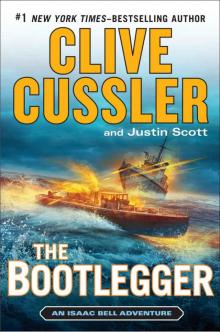 The Bootlegger
The Bootlegger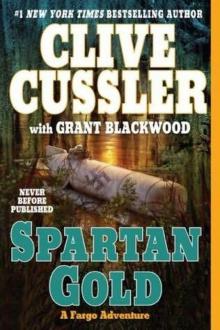 Spartan Gold
Spartan Gold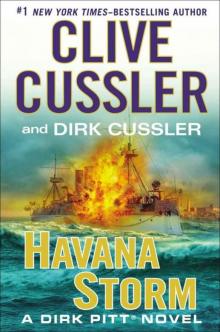 Havana Storm
Havana Storm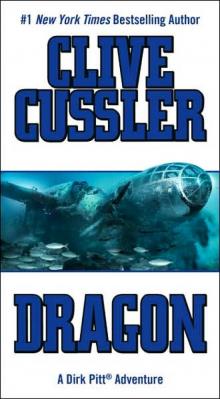 Dragon
Dragon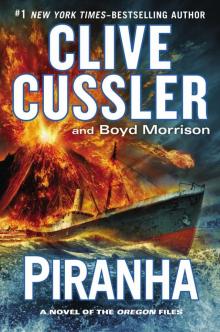 Piranha
Piranha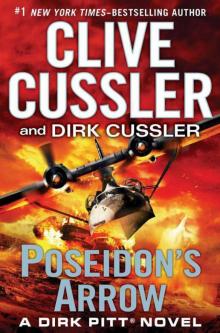 Poseidon's Arrow
Poseidon's Arrow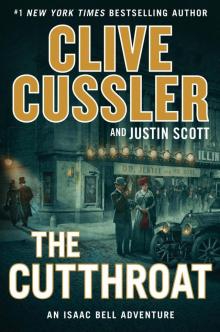 The Cutthroat
The Cutthroat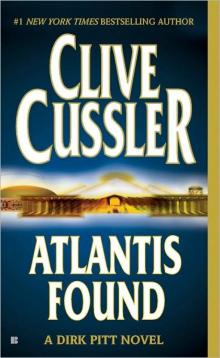 Atlantis Found
Atlantis Found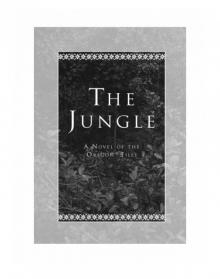 The Jungle
The Jungle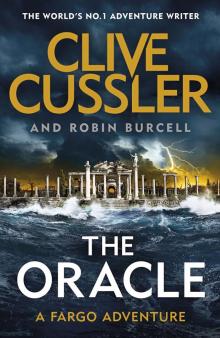 The Oracle
The Oracle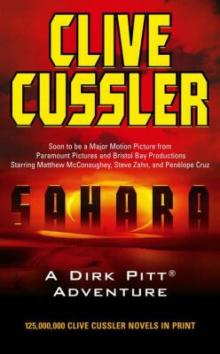 Treasure / Dragon / Sahara: Clive Cussler Gift Set
Treasure / Dragon / Sahara: Clive Cussler Gift Set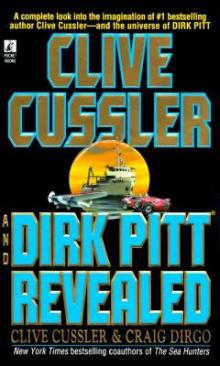 Clive Cussler and Dirk Pitt Revealed
Clive Cussler and Dirk Pitt Revealed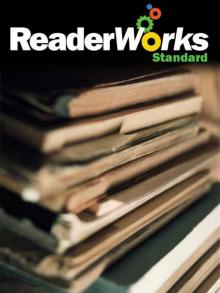 The Sea Hunters
The Sea Hunters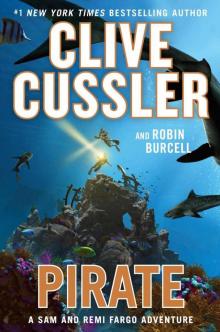 Pirate
Pirate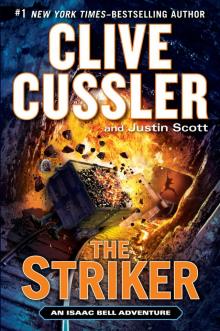 The Striker
The Striker Plague Ship
Plague Ship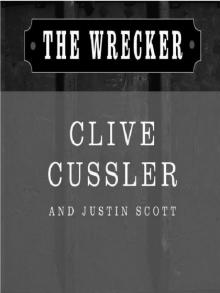 The Wrecker
The Wrecker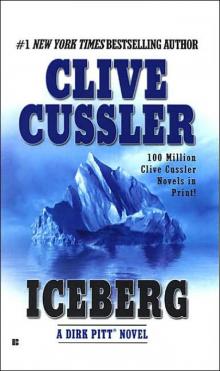 Iceberg
Iceberg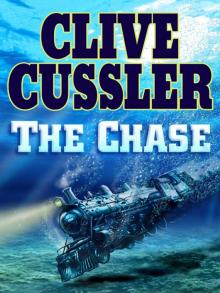 The Chase
The Chase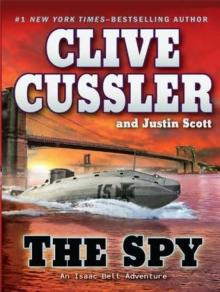 The Spy
The Spy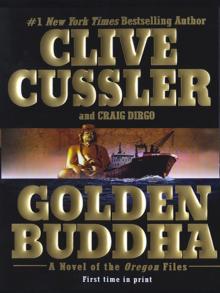 Golden Buddha
Golden Buddha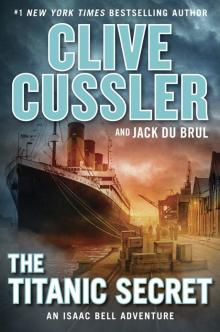 The Titanic Secret
The Titanic Secret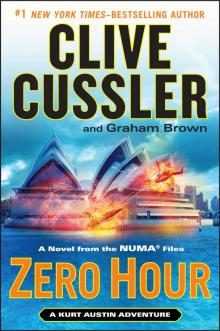 Zero Hour
Zero Hour Fire Ice
Fire Ice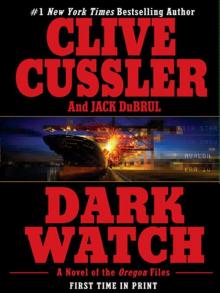 Dark Watch
Dark Watch The Storm
The Storm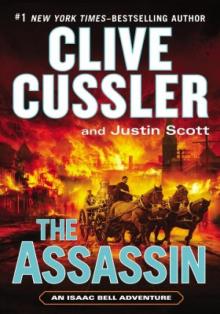 The Assassin
The Assassin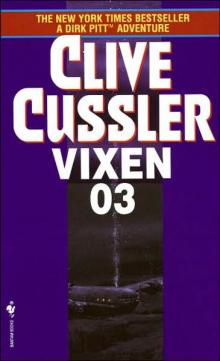 Vixen 03
Vixen 03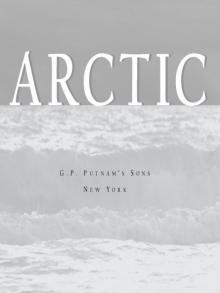 Arctic Drift
Arctic Drift Night Probe!
Night Probe! Cyclops
Cyclops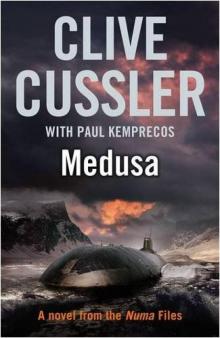 Medusa nf-8
Medusa nf-8 Shock Wave dp-13
Shock Wave dp-13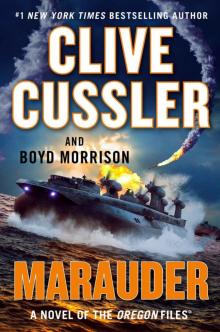 Marauder (The Oregon Files)
Marauder (The Oregon Files)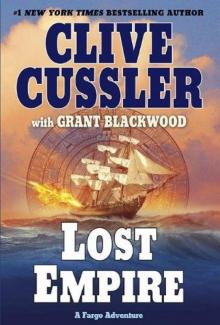 Lost Empire fa-2
Lost Empire fa-2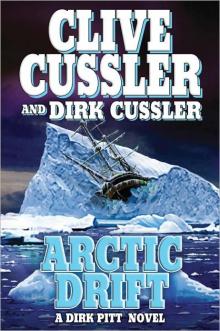 Arctic Drift dp-20
Arctic Drift dp-20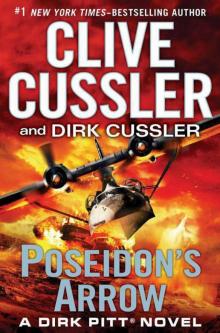 Dirk Pitt 22 - Poseidon's Arrow
Dirk Pitt 22 - Poseidon's Arrow Treasure of Khan dp-19
Treasure of Khan dp-19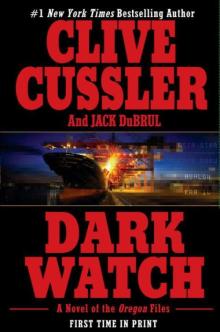 Dark Watch of-3
Dark Watch of-3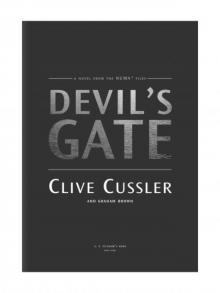 Devil's Gate
Devil's Gate The Sea Hunters II: More True Adventures with Famous Shipwrecks
The Sea Hunters II: More True Adventures with Famous Shipwrecks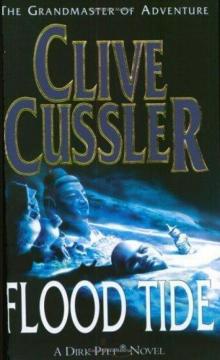 Flood Tide dp-14
Flood Tide dp-14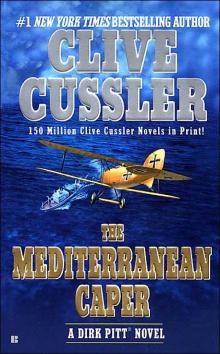 The Mediterranean Caper dp-2
The Mediterranean Caper dp-2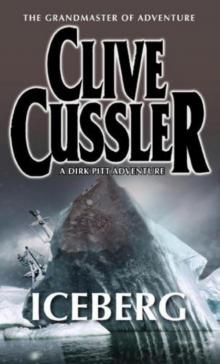 Iceberg dp-3
Iceberg dp-3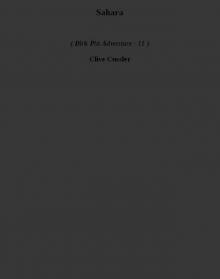 Sahara dpa-11
Sahara dpa-11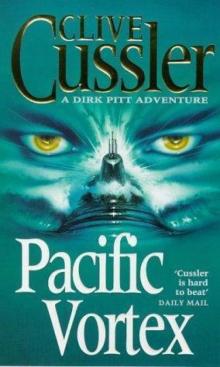 Pacific Vortex! dp-1
Pacific Vortex! dp-1 Deep Six dp-7
Deep Six dp-7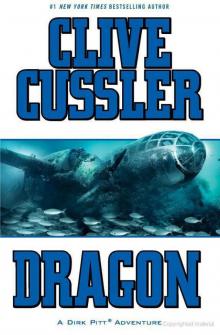 Dragon dp-10
Dragon dp-10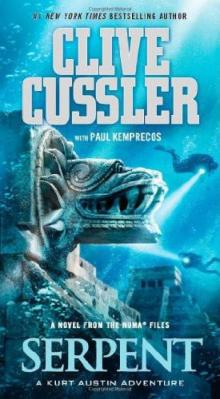 Serpent nf-1
Serpent nf-1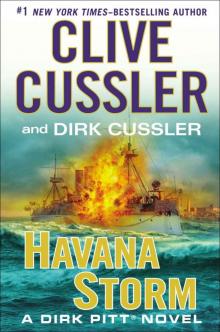 Havana Storm (Dirk Pitt Adventure)
Havana Storm (Dirk Pitt Adventure)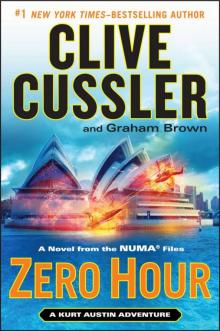 Zero Hour nf-11
Zero Hour nf-11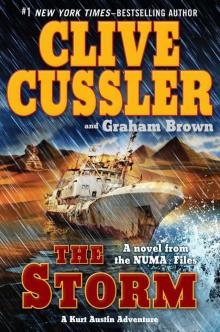 The Storm nf-10
The Storm nf-10 The Thief ib-5
The Thief ib-5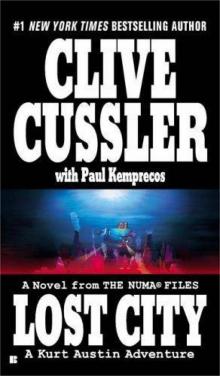 Lost City nf-5
Lost City nf-5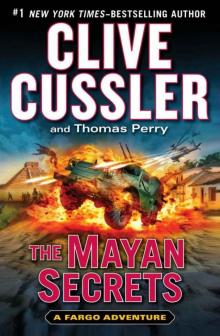 The Mayan Secrets fa-5
The Mayan Secrets fa-5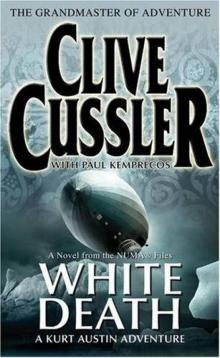 White Death nf-4
White Death nf-4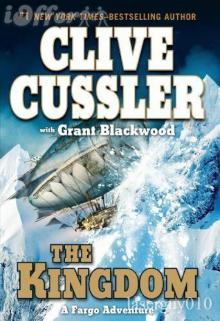 The Kingdom fa-3
The Kingdom fa-3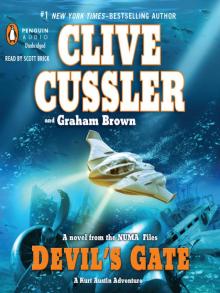 Devil's Gate nf-9
Devil's Gate nf-9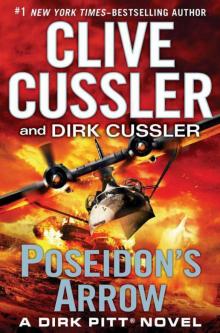 Poseidon's Arrow dp-22
Poseidon's Arrow dp-22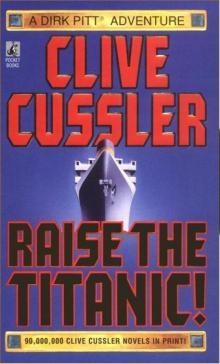 Raise the Titanic dp-4
Raise the Titanic dp-4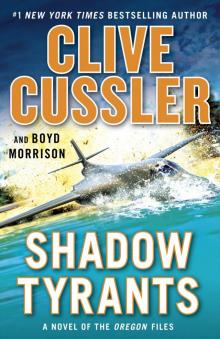 Shadow Tyrants--Clive Cussler
Shadow Tyrants--Clive Cussler Sacred Stone of-2
Sacred Stone of-2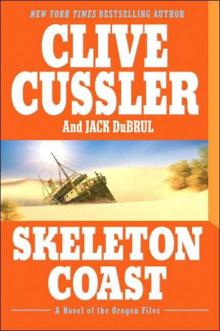 Skeleton Coast tof-4
Skeleton Coast tof-4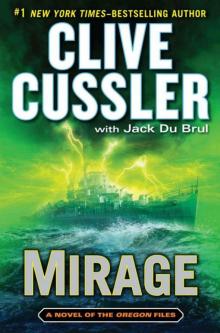 Mirage tof-9
Mirage tof-9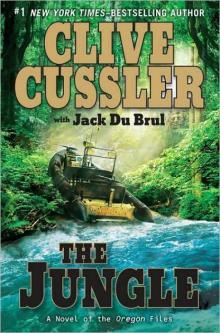 The Jungle of-8
The Jungle of-8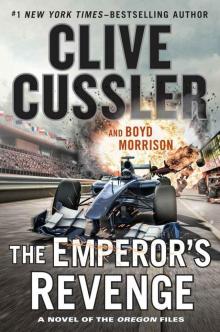 The Emperor's Revenge (The Oregon Files)
The Emperor's Revenge (The Oregon Files)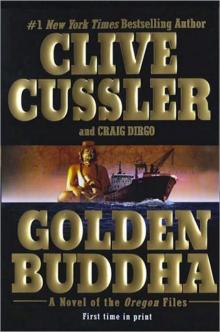 Golden Buddha of-1
Golden Buddha of-1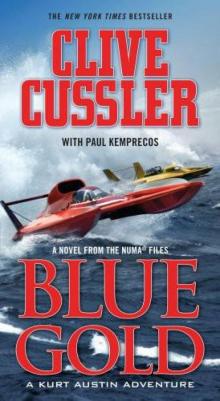 Blue & Gold
Blue & Gold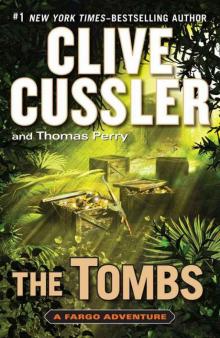 The Tombs fa-4
The Tombs fa-4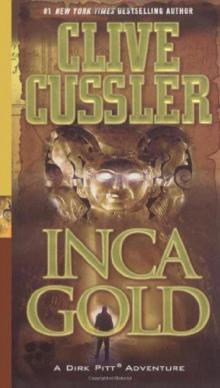 Inca Gold dp-12
Inca Gold dp-12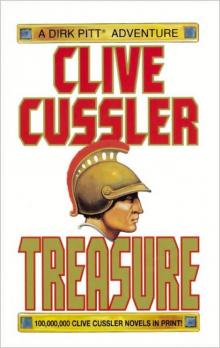 Treasure dp-9
Treasure dp-9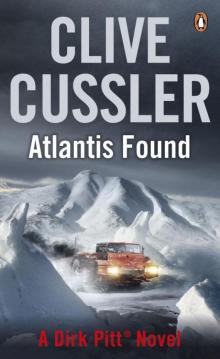 Atlantis Found dp-15
Atlantis Found dp-15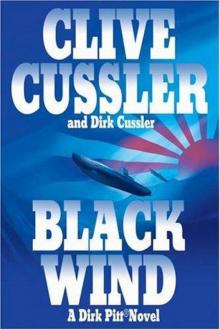 Black Wind dp-18
Black Wind dp-18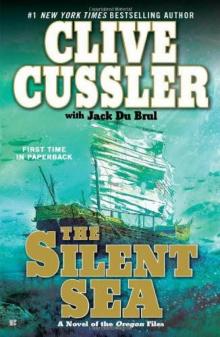 the Silent Sea (2010) tof-7
the Silent Sea (2010) tof-7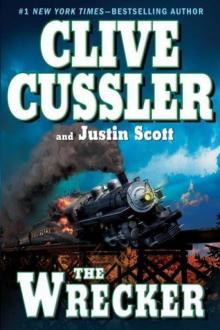 The Wrecker ib-2
The Wrecker ib-2 Fire Ice nf-3
Fire Ice nf-3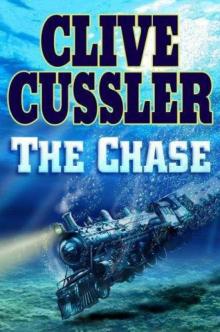 The Chase ib-1
The Chase ib-1 Sahara
Sahara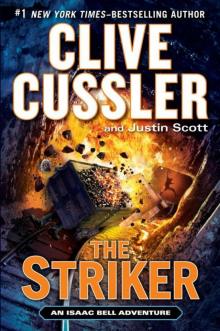 The Striker ib-6
The Striker ib-6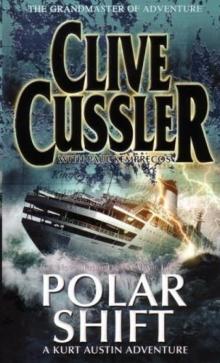 Polar Shift nf-6
Polar Shift nf-6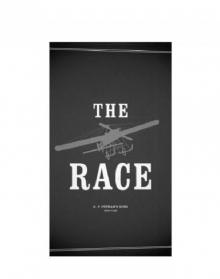 The Race ib-4
The Race ib-4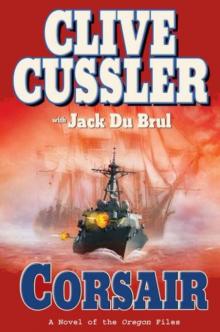 Corsair of-6
Corsair of-6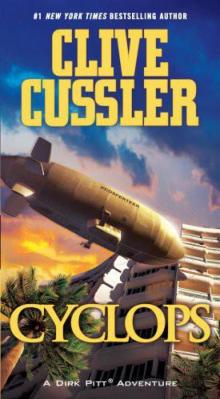 Cyclops dp-8
Cyclops dp-8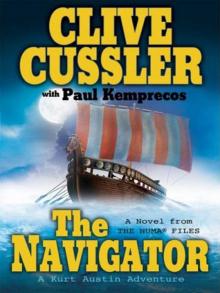 The Navigator nf-7
The Navigator nf-7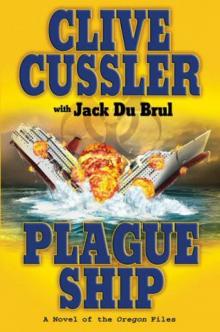 Plague Ship tof-5
Plague Ship tof-5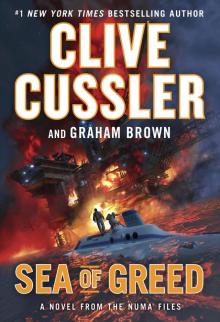 Sea of Greed
Sea of Greed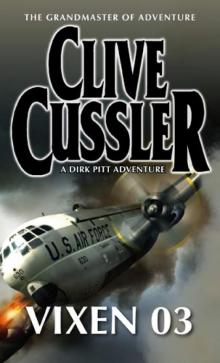 Vixen 03 dp-5
Vixen 03 dp-5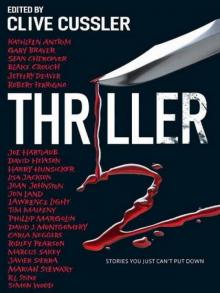 Thriller 2: Stories You Just Can't Put Down
Thriller 2: Stories You Just Can't Put Down